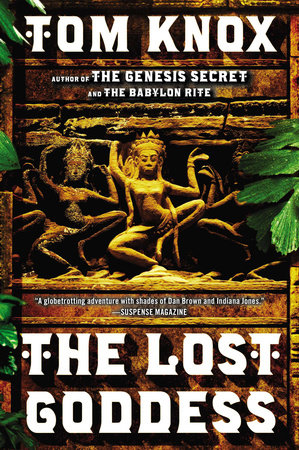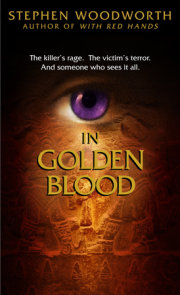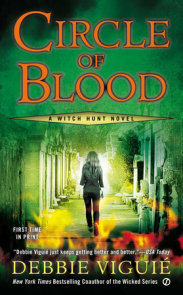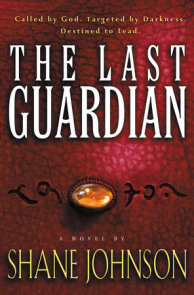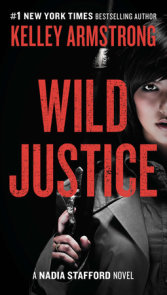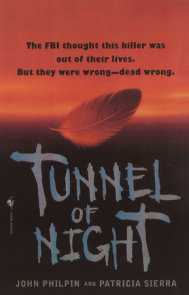READERS GUIDE
Questions and Topics for Discussion
INTRODUCTION
In a cold, dark cave in a remote corner of southern France, aspiring American archeologist Julia Kerrigan makes a grisly discovery: a collection of ancient skulls with holes deliberately bored through their foreheads. Instead of being thrilled with her extraordinary find, Julia’s mentor, the brilliant but secretive Ghislaine Quoinelles, berates and abruptly fires her. Before Julia can learn the reason for her employer’s rash action, the man is dead—ripped apart by a seemingly superhuman creature bent on some obscure and terrible vengeance. Soon, another of her colleagues has also been brutally murdered, and Julia finds herself on the greatest quest of her life: a race not only to solve the killings, but also to thwart an international conspiracy to create a race of super–strong, morally indifferent soldiers. But even as she pursues the truth Julia is also running—from a past sexual indiscretion for which she can never quite forgive herself.
Meanwhile, half a world away in Laos, British photographer Jake Thurby, is consumed by guilt from an incident involving his sister. When he was seven, his younger sister Rebecca slipped her hand out of his and ran into the path of an automobile. A potential escape from the ever–present trauma of that incident arrives in the form of Chemda Tek, a beautiful Cambodian girl who enlists Jake’s help in solving the mystery of the ancient Laotian Plain of Jars. There, they discover skulls with similar wounds—and local authorities are none too pleased with their curiosity. Jake’s impromptu safari with Chemda leads to an unexpected romance—as well as to unspeakable danger. As the two adventurers track down their answers, they soon find that they, too, are being pursued, by a force no less deadly and implacable than the descendants of the Khmer Rouge, the Cambodian political faction that turned an entire country into a massive graveyard, the killing fields of fact and legend.
Unaware of each other, Julia and Jake are gradually being drawn together from opposite sides of the same international enigma, a frightful puzzle whose jagged pieces include a band of rogue left–wing scientists, experiments in human–animal hybridization, and fiendish experiments in personality–altering surgery. Along the sinister path that will eventually unite them, Julia and Jake will encounter a host of extraordinary horrors: a fire bombing; a spider–eating witch; a transgender serial killer; a sexually inappropriate orangutan. When the two of them at last come together, it may already be too late for them to stop the greatest calamity of them all: a surgical procedure that may put an end to human personality as we know it.
A heart–pounding tale, relentlessly paced, and surprisingly keen in its philosophical and political commentary, The Lost Goddess takes the genre of the thriller into virtually unknown territory. A true rollercoaster of a novel, it takes its readers to the pinnacles of horror and the depths of human guilt and despair—and, remarkably, lets them off somewhere in the general vicinity of God. The Lost Goddess is truly an unforgettable ride.
ABOUT TOM KNOX
“Tom Knox” is the nom de plume of Sean Thomas, novelist and international journalist. Of the works he has written under his own name, Thomas is best known for his internet–dating memoir, Millions of Women Are Waiting to Meet You. Thomas’ two previous thriller novels, both bestsellers with archeological themes, areThe Genesis Secret and Marks of Cain. He lives in London.
A CONVERSATION WITH TOM KNOX
Q. Tom Knox is, as we know, a pseudonym. What advantages do you find as a writer in using an alter ego?
It allows me to escape the reputation—good and bad—that I had as writer/journalist Sean Thomas. As you say, probably my best known work as Sean Thomas is the love–life memoir Millions of Women are Waiting to Meet You. This was quite a bestseller—it’s been translated into eight languages—but it’s also very, very different to a thriller.
If I’d written thrillers under the same name Sean Thomas, then readers might have been shocked by the rather wrenching transition: from discussions of dating etiquette and sexual disasters—to archaeological mystery and religious intrigue.
Plus I just like the name Tom Knox. It suits the genre.
Q. The Lost Goddess is dedicated to the villagers of Balagezong, the scene of the novel’s climactic chapters. What do these people mean to you, and why did you dedicate your book to them?
Balagezong, like most places in my thrillers, is a real location. I try to include as much reality and authenticity in my books as possible so the reader can think “Hmm, this might have actually happened.”
The tiny village of Balagezong is on top of a mountain in a remote part of Tibetan Yunnan in southwest China. It is surrounded by jungled gorges and snow–capped Himalayan peaks. When I got there, they had just completed the road up to the village a few days before; previously it took weeks of walking to get from this little village to “civilization”.
I therefore believe I was one of the first westerners to visit this wildly inaccessible place, a place so cut–off it has its own tiny language—a strange version of Tibetan.
Balagezong is so beautiful it made me cry. Indeed I had an epiphany—a meeting with the divine, a vision of God—as I stood by the stupa with the quietly fluttering prayer–flags—or “wind–horses.” Maybe it was the puer–cha tea, maybe it was the high altitude, but I truly felt something there.
The dedication is my way of saying thanks for this experience—and my way of expressing gratitude to the hospitable Tibetans of Bala village, who have suffered a lot, like many Tibetans, and many Chinese, in the last sixty years.
Q. One can only have written a book like The Lost Goddess after having done a lot of traveling. What personal experiences of travel figured most prominently for you in the writing of The Lost Goddess?
Cambodia, Cambodia, Cambodia.
I love southeast Asia and have travelled there widely in the last two decades: and Cambodia haunts me like few other places. You walk the streets of the capital, Phnom Penh, and you rarely see old people—this is, of course, because so many of the older people have been taken away: murdered by the Khmer Rouge, the most bestial regime in history.
And yet Cambodia is also home to the most exquisite pre–industrial city on earth, Angkor: to my mind the most sublime ancient ruins in existence. This one tiny country, Cambodia, has therefore seen the best and worst of humanity. So it loomed large in my mind as I wrote the book.
Several other inspiring landscapes entered the book: Laos, and remote southern France, and even Bangkok at night. All extraordinary in their own way. I like to provide escapism in my books—to take readers somewhere exotic.
Q. Although travel has shaped you powerfully, there is evidence in The Lost Goddess that you are not overly fond of certain forms of tourism. Any thoughts?
Fifteen years ago I lived in Chiang Mai in northern Thailand. Back then this city—the “rose” of Thailand—was a hushed, sweet little city of temples and canals and drowsy monks, where you could hear bicycles in the streets. Now it is a mini–Bangkok with traffic jams and supermarkets. It’s almost tragic.
And now you can sense the same thing happening to other beautiful little Indochinese towns, like Luang Prabang in Laos. Can we stop this before it is too late? UNESCO are trying, and good luck to them.
On the other hand some kinds of tourism create fascinating new towns from scratch; Vang Vieng in Laos is a good example. In the middle of the jungle is a small city built entirely, in the last few years, for young western backpackers to take drugs and go mad. Intense.
Q. As part of your research for this book, you ate a Cambodian tarantula. What was that like?
The thorax. Oh god the thorax—with the spider gunge inside. DO NOT EAT THE THORAX.
Q. The Lost Goddess contains some powerful, persuasive intellectual messages, touching on psychology, anthropology, politics, and religion. Yet you’ve chosen to present these messages within a sensationalist context that includes a spider–eating hag, a transgender serial killer, and a would–be rapist orangutan. What is the relationship between the serious content of your novel and its very powerful thriller elements, and how did you try to keep them in balance?
You’ve got to entertain. My first job as a novelist, I believe, is to entertain, to tell a good story, to get people hooked, to let them escape into a tale well told. So, yes, some of the characters and situations are quite lurid and highly–colored and I hope more entertaining thereby.
There is no shame in this. Look at Dickens: his books were full of vivid and carnivalesque characters; or look at Shakespeare—he had witches in Macbeth and ghosts in Hamlet.
But once you have a good, vivid plot there is nothing wrong with weaving in some very serious themes; in fact I am sure readers like them, they like to find out new facts, and think of the world in new ways—as long as they get a cracking story, too.
Q. You have garnered a reputation for writing scenes of violence and mayhem—off–putting to some, engrossing to others. What emotions do you yourself experience when writing these portions of your novels?
Violence is part of life, and I write stories that often centre on violent themes—sacrifice in The Genesis Secret, genocide inThe Marks of Cain, brutal tyranny in The Lost Goddess. It is hard to write a story about the Khmer Rouge and Chinese communism without including scenes of great violence.
I hope and believe they are not gratuitous. Also I write thrillers—and a thriller needs a little mustard to make it thrilling.
The only emotions I experience when writing these scenes are pleasure—if the writing is going well—or gloom—if the writing is going badly. That’s the case for all my writing.
Q. The Lost Goddess can be seen as an odyssey of faith. What has your own journey of belief and unbelief been like?
I used to be a teenage atheist. Now I believe. This belief comes and goes, like a radio signal on a fast drive through the hills, but it is always out there.
Q. Your novel appears at one point to link Zen Buddhism, which would strike many as a rather benign belief system, with the malignant nihilism of the Pol Pot regime. What was the point you were trying to make?
I believe societies need religion, in general, to prevent them slipping into despotism or cruelty or bleak materialism. Of course this does not exonerate religions per se—tens of millions have probably died in the name of “faith.”
But many more have died at the hands of atheist dictatorships—communist China, Maoist Cambodia, Nazi Germany, Stalin’s Russia. Why? Maybe there is something slightly inhuman about atheism? I certainly believe we are meant to believe, and science shows that our brains are probably “adapted” for faith—we are hard–wired for religiosity.
Take away even the possibility of faith and you have a recipe for terrible atrocities, as we flail around for alternatives.
Q. Near the end of The Lost Goddess, one of the characters, Dr. Fishwick, posits that atheism is “a form of dementia . . . a mental illness.” This comes as rather a shock in a novel in which the bad guys have felt roughly the same way about belief. Your novel displays vividly the horrors that might result from an attempt to “cure” religiosity. Doesn’t the implication atheism is an illness, and might also presumably be “cured,” reopen the can of worms from the other end?
Yes, that idea was meant to provoke. To get people thinking. As neurosurgery and genetic therapy, and our understanding of the brain, all evolve, we will be presented with dilemmas more acute than ever. For instance, we may discover a “cure” for homosexuality. But that presumes homosexuality is something we want to cure. My many gay friends would fiercely and understandably object to this notion.
This part of the book is meant to ask questions; I don’t always give answers.
Q. What are you working on now?
The next book is all about ritual magic and Italian crime and Egyptian history and yes, religion! I love writing about religion: and I believe people love reading about it. Why are we here? Who made us? Is there a God? These are the big questions. Big questions make for good, exciting thrillers—I hope.
DISCUSSION QUESTIONS







